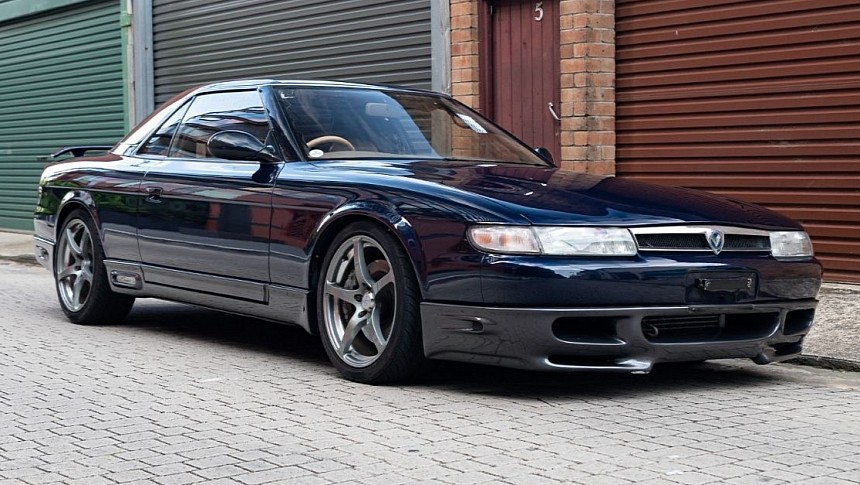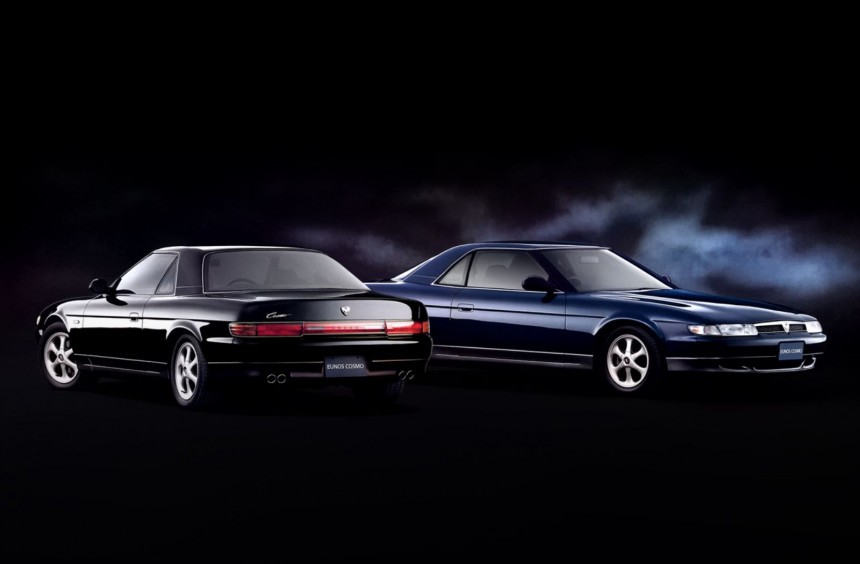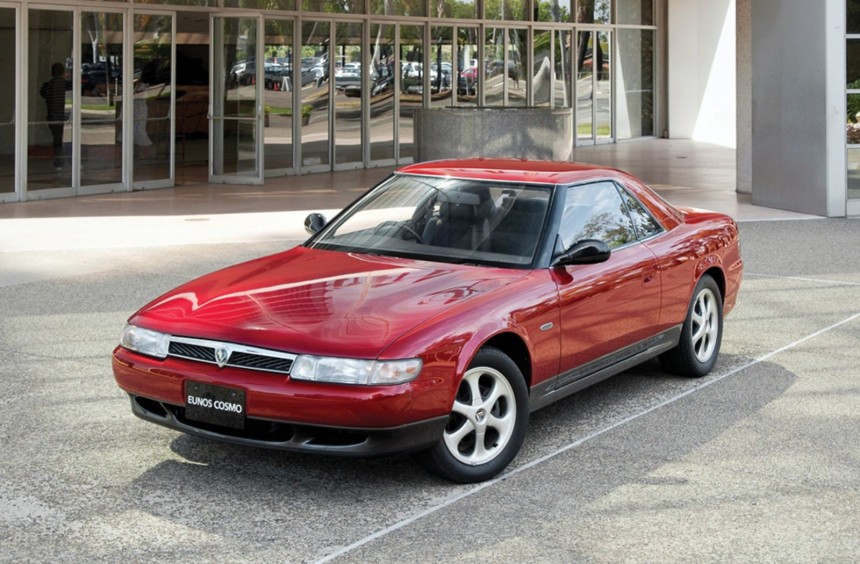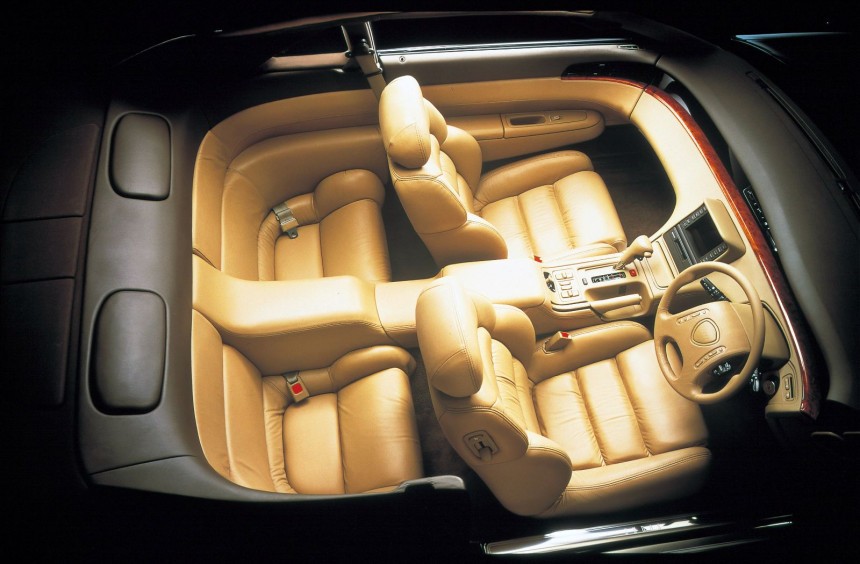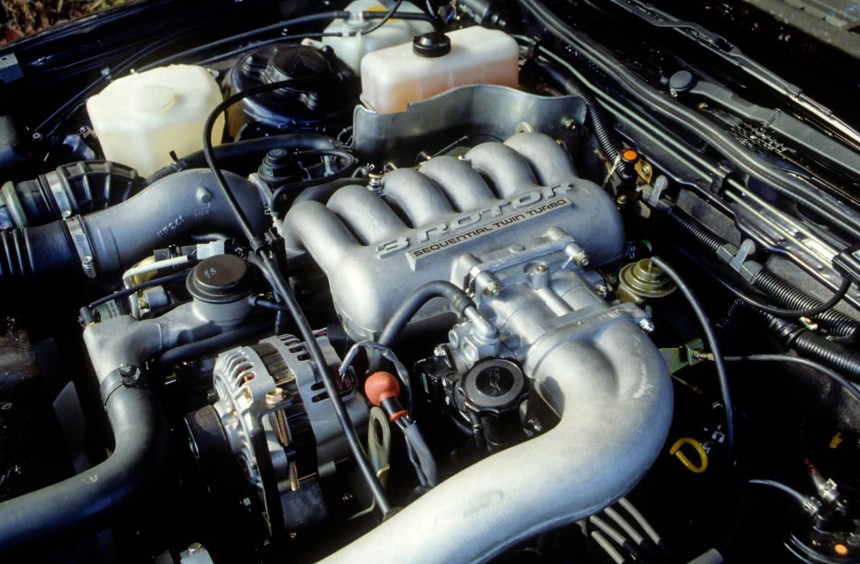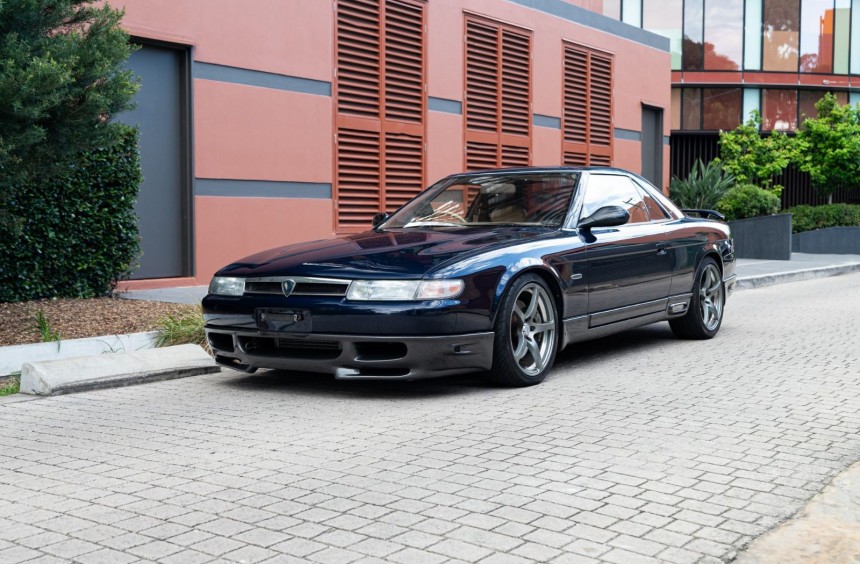Even though 27 years have passed since the last example rolled off the assembly line, the Eunos Cosmo is still one of the most innovative production cars that Mazda has ever unleashed on public roads.
Invented and demonstrated by German engineer Felix Wankel, and made commercially feasible by his compatriot, Hanns-Dieter Paschke, the rotary engine was born in Germany but rose to worldwide fame in Japan.
Though it didn't build the first production car to feature a rotary engine, Mazda adopted the design and took it to the most commercially viable level in several successful mass-produced models, like the legendary RX-7.
It all started in 1967 when the carmaker began production of the first-generation Cosmo (L10A), a small, hand-built two-door luxury coupe that became its rotary-powered flagship until 1972.
The Cosmo nameplate returned in 1975 when the second-generation model (known as RX-5 outside Japan) was introduced.
Though it was also available with a conventional inline-four, the series CD Cosmo introduced a pair of improved two-rotor engines that made it one of the most fuel-efficient cars in its segment.
By 1978, the rotary made its way into what later became Mazda's most popular model: the RX-7. Nevertheless, the Cosmo continued to be Mazda's rotary flagship model.
The third-generation (HB) that debuted in 1981 showcased the first turbocharged versions of the innovative engine. In its most powerful form, the turbocharged two-rotor made the Cosmo coupe Japan's fastest production car available during the 1982 model year.
The HB Cosmo was manufactured until 1989 and was replaced by a new model a year later. However, the fourth and last generation of the Cosmo became the first to be marketed without Mazda badges.
By the second half of the 1980s, Japan's most important carmakers launched new brands focused on the premium segment.
Honda was the first, introducing Acura in 1986. Three years later, Toyota and Nissan joined the luxury segment with Lexus and Infiniti.
Of course, Mazda also followed suit that year with Eunos, but unlike its rivals, the new luxury brand was focused on the Japanese market rather than North America.
Though Mazda's new luxury brand featured the 100 and 300 models for the 1989 model year, its halo offering came in 1990, bearing the Cosmo nameplate.
Like its predecessors, the fourth-gen (JC) Cosmo continued to be Mazda's flagship rotary model, but this time, it morphed into the company's most technologically advanced production model.
Unlike Acura, Lexus, and Infiniti, which marketed luxurious sedans as their flagship models, Eunos used a different formula for its top-of-the-line offering.
Inspired by the iconic European gran turismos (grand tourers) of the 1950s and 1960s, the new Cosmo aimed to offer an unparalleled mix of luxury, performance, and technological innovation.
A modern reinterpretation of what Italians called a 2+2 seat Berlinetta three decades earlier, the JC Cosmo was loosely based on the 1985 MX-03 concept car.
Unlike the first-gen Cosmo that drew inspiration from the Euro GTs of the era, the new model's body was sculptured in a thoroughly Japanese style.
That was evident in its resemblance to the two-door version of the popular R32 Skyline that debuted a year earlier.
That being said, the Cosmo was longer, wider, and boasted more round shapes, giving it a distinct character.
While versions of the R32 were available with the innovative ATESSA 4WD and HICAS four-wheel steering system, the Cosmo was a more conventional RWD, GT-style sports car in terms of chassis tech.
However, its stand-out features were found inside the cabin and, of course, under the hood.
Apart from its exterior shape, the Cosmo's grand tourer aspirations were clear when climbing inside.
The car featured a pair of humongous, power-adjustable bucket seats and an equally comfortable backseat split by a center console.
In luxury-oriented trim, the seats were fully covered in fine leather, while the sportier version added premium fabric inserts.
But, the stand-out features that made jaws drop were found on the curved dashboard. The first was a fully digital gauge cluster that featured a color LCD rendering analog gauges.
The second was a smaller monochrome screen placed on the passenger side that displayed info like the time of the car's average speed.
Finally, the most innovative feature was a central CRT color touchscreen that worked like modern infotainment screens.
It was used to control the car's air conditioning system, radio, and CD player. Moreover, a mobile phone (first commercially available only a few years earlier) could be linked to the screen via a wired connection, enabling occupants to use certain phone functions on the touchscreen.
Even more impressive for 1990, the infotainment screen featured a built-in GPS navigation, making the Eunos Cosmo the first production car in the world to offer such a feature.
Under the hood, the car hid either a 13B or 20B rotary. The first engine was a two-rotor, while the second made the JC Cosmo, the first and only mass-produced car powered by a three-rotor engine.
The 1.3- and 2.0-liter were the first Mazda rotaries equipped with sequential twin-turbos.
The addition of this forced induction system pushed the 13B to 230 hp and 216 lb-ft (293 Nm) of torque, while the three-rotor 20B was rated at 276 hp and 296 lb-ft (401 Nm) of torque.
The three-rotor's rating resulted from the infamous gentleman's agreement that limited all Japanese engines to under 280 hp. In reality, it was capable of well over 300 hp with just a simple ECU remap.
Despite the availability of the potent 20B engine and the sport trim (Type S), which, among others, added a stiffer suspension setup, the Cosmo was only offered with a four-speed automatic.
Though it was an unrivaled JDM grand tourer, the JD Cosmo's success was limited by the Japanese government's revamped dimension regulations and the country's financial crisis.
Buyers were forced to pay larger yearly taxes since the car didn't comply with the new regulations. That, combined with its exorbitant price of roughly $44,000 in 1990 US dollars (around $ 103,000 today), made it a tough sell.
Nevertheless, Mazda continued production until September 1995, selling 8,875 Eunos Cosmos in the process.
Today, this JDM rotary legend is largely forgotten despite being the only production car to feature a three-rotor engine and one of the most hi-tech vehicles of its era.
On the bright side, it's currently one of the cheapest rotary-powered Mazdas available on the used car market. Two-rotor versions can be had for around $8,000, while the rarer three-rotor go for an average price of $15,000.
If you want to see this fantastic piece of JDM history being driven and learn more about its history, we recommend watching the YouTube video below by Jalopnik.
Though it didn't build the first production car to feature a rotary engine, Mazda adopted the design and took it to the most commercially viable level in several successful mass-produced models, like the legendary RX-7.
It all started in 1967 when the carmaker began production of the first-generation Cosmo (L10A), a small, hand-built two-door luxury coupe that became its rotary-powered flagship until 1972.
The Cosmo nameplate returned in 1975 when the second-generation model (known as RX-5 outside Japan) was introduced.
Though it was also available with a conventional inline-four, the series CD Cosmo introduced a pair of improved two-rotor engines that made it one of the most fuel-efficient cars in its segment.
By 1978, the rotary made its way into what later became Mazda's most popular model: the RX-7. Nevertheless, the Cosmo continued to be Mazda's rotary flagship model.
The third-generation (HB) that debuted in 1981 showcased the first turbocharged versions of the innovative engine. In its most powerful form, the turbocharged two-rotor made the Cosmo coupe Japan's fastest production car available during the 1982 model year.
The HB Cosmo was manufactured until 1989 and was replaced by a new model a year later. However, the fourth and last generation of the Cosmo became the first to be marketed without Mazda badges.
Promoting a new luxury brand with a mind-blowing grand tourer
Honda was the first, introducing Acura in 1986. Three years later, Toyota and Nissan joined the luxury segment with Lexus and Infiniti.
Of course, Mazda also followed suit that year with Eunos, but unlike its rivals, the new luxury brand was focused on the Japanese market rather than North America.
Though Mazda's new luxury brand featured the 100 and 300 models for the 1989 model year, its halo offering came in 1990, bearing the Cosmo nameplate.
Like its predecessors, the fourth-gen (JC) Cosmo continued to be Mazda's flagship rotary model, but this time, it morphed into the company's most technologically advanced production model.
Gran Turismo with a Japanese twist
Inspired by the iconic European gran turismos (grand tourers) of the 1950s and 1960s, the new Cosmo aimed to offer an unparalleled mix of luxury, performance, and technological innovation.
A modern reinterpretation of what Italians called a 2+2 seat Berlinetta three decades earlier, the JC Cosmo was loosely based on the 1985 MX-03 concept car.
Unlike the first-gen Cosmo that drew inspiration from the Euro GTs of the era, the new model's body was sculptured in a thoroughly Japanese style.
That was evident in its resemblance to the two-door version of the popular R32 Skyline that debuted a year earlier.
That being said, the Cosmo was longer, wider, and boasted more round shapes, giving it a distinct character.
While versions of the R32 were available with the innovative ATESSA 4WD and HICAS four-wheel steering system, the Cosmo was a more conventional RWD, GT-style sports car in terms of chassis tech.
However, its stand-out features were found inside the cabin and, of course, under the hood.
Luxury and comfort boosted by pioneering tech
The car featured a pair of humongous, power-adjustable bucket seats and an equally comfortable backseat split by a center console.
In luxury-oriented trim, the seats were fully covered in fine leather, while the sportier version added premium fabric inserts.
But, the stand-out features that made jaws drop were found on the curved dashboard. The first was a fully digital gauge cluster that featured a color LCD rendering analog gauges.
The second was a smaller monochrome screen placed on the passenger side that displayed info like the time of the car's average speed.
Finally, the most innovative feature was a central CRT color touchscreen that worked like modern infotainment screens.
It was used to control the car's air conditioning system, radio, and CD player. Moreover, a mobile phone (first commercially available only a few years earlier) could be linked to the screen via a wired connection, enabling occupants to use certain phone functions on the touchscreen.
Even more impressive for 1990, the infotainment screen featured a built-in GPS navigation, making the Eunos Cosmo the first production car in the world to offer such a feature.
The first and only production car powered by a three-rotor engine
The 1.3- and 2.0-liter were the first Mazda rotaries equipped with sequential twin-turbos.
The addition of this forced induction system pushed the 13B to 230 hp and 216 lb-ft (293 Nm) of torque, while the three-rotor 20B was rated at 276 hp and 296 lb-ft (401 Nm) of torque.
The three-rotor's rating resulted from the infamous gentleman's agreement that limited all Japanese engines to under 280 hp. In reality, it was capable of well over 300 hp with just a simple ECU remap.
Despite the availability of the potent 20B engine and the sport trim (Type S), which, among others, added a stiffer suspension setup, the Cosmo was only offered with a four-speed automatic.
The Eunos Cosmo today
Buyers were forced to pay larger yearly taxes since the car didn't comply with the new regulations. That, combined with its exorbitant price of roughly $44,000 in 1990 US dollars (around $ 103,000 today), made it a tough sell.
Nevertheless, Mazda continued production until September 1995, selling 8,875 Eunos Cosmos in the process.
Today, this JDM rotary legend is largely forgotten despite being the only production car to feature a three-rotor engine and one of the most hi-tech vehicles of its era.
On the bright side, it's currently one of the cheapest rotary-powered Mazdas available on the used car market. Two-rotor versions can be had for around $8,000, while the rarer three-rotor go for an average price of $15,000.
If you want to see this fantastic piece of JDM history being driven and learn more about its history, we recommend watching the YouTube video below by Jalopnik.
